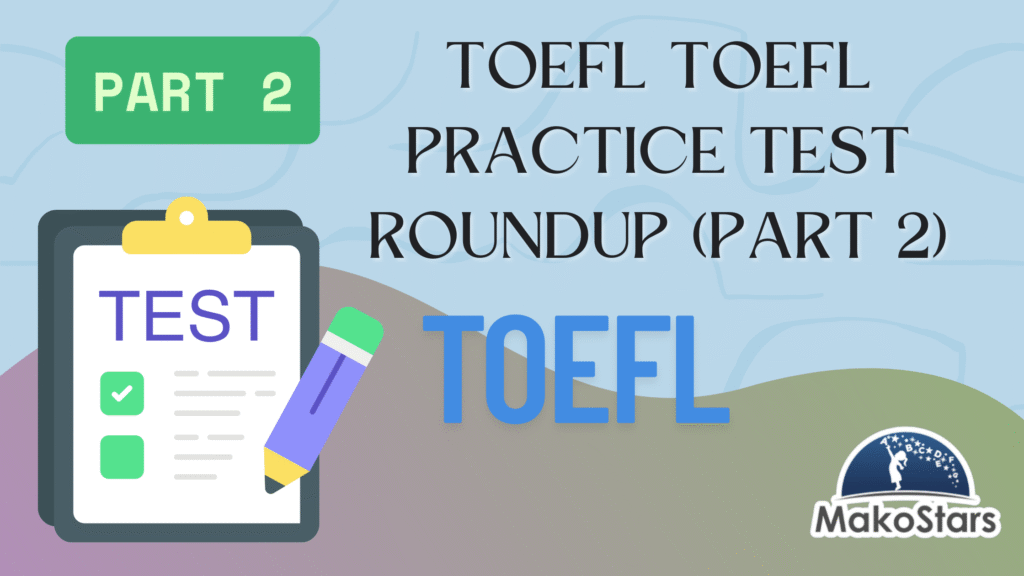Effective Note-Taking Strategies for ESL Students in English-Medium Classes
Table of Contents
Introduction
Mastering note-taking strategies is a game-changer for ESL students in English-medium classes. It’s not just about jotting down information; it’s about developing a skill that boosts understanding, retention, and academic success. For ESL learners, good note taking strategies bridge the gap between language proficiency and content comprehension, giving them a powerful tool to excel in their studies.
This article dives into the best note-taking strategies for ESL students, covering everything from active listening techniques to language-specific approaches. We’ll explore how to prepare for class, choose the right method, and overcome language barriers.
Whether you’re looking to improve your reading notetaking strategies or enhance your listening and notetaking skills, you’ll find practical tips to take your academic performance to the next level.
Understanding the Importance of Note-Taking for ESL Students
For ESL students in English-medium classes, note-taking strategies have a huge impact on academic success. These learners face unique challenges that make effective note-taking even more crucial. They’re not just dealing with new information; they’re processing it in a language that isn’t their first.
Challenges Faced by ESL Learners
ESL students often struggle with several aspects of listening and notetaking skills:
- Keeping up with the pace: They might find it hard to write fast enough while also trying to understand the content.
- Language processing: They need to quickly process and evaluate new information and vocabulary in English.
- Writing under pressure: Applying English spelling and grammar skills while writing quickly can be stressful.
- Cultural differences: Some cultures emphasize fact-gathering over global comprehension, which is more common in US education.
- Attention and focus: Maintaining concentration in a second language can be mentally taxing.
These challenges can lead to less use of abbreviations, more pauses before writing, and fewer notes overall. Some students might even resort to using their native language in their notes, which can cause confusion later.
Benefits of Effective Note-Taking
Despite these challenges, mastering note-taking strategies can greatly benefit ESL students:
- Improved comprehension: Good note taking strategies help students better understand main concepts and retain information.
- Enhanced active listening: Note-taking encourages students to focus and engage with the material.
- Better exam preparation: Well-organized notes are crucial for reviewing and studying class material.
- Time and energy savings: Efficient notes can save students from the confusion that often results from disorganized or insufficient notes.
- Increased confidence: As note-taking skills improve, students may feel more comfortable participating in class discussions.
Preparing for Successful Note-Taking

Successful types of note taking strategies for ESL students begin long before they step into the classroom. By implementing effective pre-class strategies and equipping themselves with the right tools, ESL learners can set themselves up for success in English-medium classes.
Essential Tools and Materials
Having the right tools can make a significant difference in note-taking efficiency. ESL students should consider the following:
- Using separate notebooks for each class. You can find great books at Makostars Store.
- Incorporating note-taking systems like the Cornell Method, which is easy to implement with ruled Maruman Spiral Note Basic Notebooks.
- Utilizing index tabs, like Cluster Japan Pitta Index Tab Sticky Notes, to mark frequently revisited pages.
- Employing different loose-leaf sheet styles as needed.
- Using translucent sticky notes, such as Stalogy Translucent Sticky Notes, to trace important diagrams from textbooks.
- Investing in a multi-color pen for color-coding notes.
Mastering Active Listening Techniques

Active listening is a crucial skill for ESL students to develop. It involves more than just hearing the words; it’s about understanding the message and its context. By mastering active listening techniques, students can improve their note-taking abilities and overall comprehension in English-medium classes.
Identifying Key Information
To identify key information during lectures, students should focus on several aspects:
- Listen for repeated or emphasized information. Lecturers often highlight important concepts by repeating them or speaking with more emphasis.
- Pay attention to transitions and organizational cues. Words like “first,” “second,” “in summary,” or “the main point is” signal that the lecturer is about to share a key idea.
- Note down ideas, definitions, or examples that the lecturer spends more time elaborating on. These are likely crucial elements that the lecturer wants the audience to understand well.
- Look for visual aids like slides, diagrams, or handouts. The lecturer has chosen to visually represent certain points, indicating their significance.
Recognizing Verbal and Non-Verbal Cues

Recognizing both verbal and non-verbal cues can greatly enhance an ESL student’s ability to capture important information:
- Verbal cues: Pay attention to changes in the lecturer’s tone and volume. Shifts in delivery can signify a transition to a key point.
- Non-verbal cues: Observe the lecturer’s body language and facial expressions. These can reinforce the spoken message or provide additional context.
- Eye contact: When the lecturer maintains eye contact with the audience, it often indicates the importance of the information being shared.
- Gestures: Pointing or other hand movements can draw attention to specific points or visual aids.
By developing these active listening skills, ESL students can become more effective note-takers and better understand the content of their English-medium classes. Practice and consistency are key to mastering these techniques.
Types of Note Taking Strategies

ESL students can benefit from various note-taking methods to enhance their learning experience in English-medium classes. Here are three effective types of note taking strategies that can help them capture and organize information more efficiently:
Cornell Method
The Cornell Method is a powerful tool for taking useful notes. It allows the brain to work in several different ways, aiding effective learning and retention. This method is particularly helpful for ESL students who may struggle with writing an entire page of notes.
To implement the Cornell Method:
- Divide the page into three sections: a narrow left column, a wider right column, and a bottom section.
- Use the right column for main notes during class.
- After class, use the left column to write key words or questions related to the main notes.
- Summarize the main ideas in the bottom section.
For ESL students who find it challenging to write extensive notes, teachers can provide partially filled-in templates. This approach allows students to engage with the note-taking process without becoming overwhelmed.
Mind Mapping
Mind mapping is a powerful tool for organizing and retaining information over a longer period. It’s particularly useful for ESL students as it works with visual elements, enhancing cognitive abilities and creativity.
Benefits of mind mapping for ESL students include:
- Easy brainstorming and investigation of different ideas
- Better comprehension and association of concepts
- Effective conveyance of complex topics
- Simplified arrangement of ideas
To create a mind map:
- Start with a central topic in the middle of the page.
- Branch out with supporting ideas.
- Add details to each branch as needed.
Outline Method
The outline method is one of the best ways to break down big ideas into digestible pieces. It’s well-suited for topics that require a lot of words to explain, helping ESL students organize information logically.
To use the outline method:
- Write down a main point to the left of the page.
- Indent to the right and note supporting ideas below it.
- Elaborate on points by indenting further to the right.
- Repeat this process for all main ideas.
This method creates a clear hierarchy of information, making it easy for ESL students to follow and review their notes later.
Developing Language-Specific Strategies
ESL students can enhance their note-taking abilities by developing language-specific strategies. These techniques help them overcome language barriers and capture information more effectively in English-medium classes.
Dealing with Unfamiliar Vocabulary
When encountering new words, ESL students can employ several strategies:
- Use context clues: Look at the surrounding words and sentences to guess the meaning.
- Break words into parts: Identify familiar prefixes, suffixes, or root words to understand the meaning.
- Make connections: Link new words to similar ones in their native language or other known English words.
- Jot down unfamiliar words: Write them in a separate section to look up later.
Using Abbreviations and Symbols
To speed up listening and notetaking skills, ESL students can develop a system of abbreviations and symbols:
- Shorten common words:
- Use word beginnings: “pol” for politics, “gov” for government
- Add final letters: “govt” or “gov’t” for government
- Omit vowels: “prblm” for problem, “schl” for school
- Abbreviate endings:
- For “-ing” endings: “ckg” or “ckng” for checking
- Create subject-specific abbreviations:
- For example, in a lecture about acid rain: “AR” for acid rain, “S” for sulphur
- Use mathematical and common symbols:
- “≈” for approximately, “↑” for increase, “↓” for decrease
- Develop personal symbols:
- Use characters from their native language if quicker to write
- Create unique abbreviations that make sense to them
By implementing these strategies, ESL students can improve their note-taking speed and comprehension in English-medium classes.
Post-Class Review and Organization
After class, ESL students should review and organize their notes to reinforce learning and prepare for future study. This process involves summarizing key points and creating effective study guides.
Summarizing and Expanding Notes
One effective strategy for post-class review is the 3-2-1 List method. Students can identify three main points from the lecture, two controversial ideas or points they disagree with, and one question related to the key concept. This approach helps students focus on the most important information and encourages critical thinking.
Another useful technique is the “Important Thing” strategy. Students list three important ideas from the lesson and then identify the most crucial point they learned. This method helps prioritize information and reinforces key concepts.
To expand on their notes, students can use the “Questions to the Teacher” technique. They list three questions they still need clarification on, which can guide their future study and help them identify areas that require more attention.
Creating Study Guides
Guided Notes can serve as an excellent foundation for creating study guides. These teacher-prepared handouts outline lectures or readings, leaving blank spaces for students to fill in key concepts and facts. They help ESL students focus on vocabulary and concept comprehension rather than struggling with grammar and structure under time pressure.
To transform guided notes into effective study guides, students can:
- Review and complete any missing information
- Highlight or underline key terms and concepts
- Add personal examples or mnemonics to aid memory
- Create visual aids like diagrams or mind maps to represent complex ideas
Research shows that guided notes incorporating diagrams, pictures, blanks, spaces, and tables have a more significant impact than plain note-taking. Students using guided notes have demonstrated 10% higher quiz scores and 36% more accurate note-taking compared to those without guided notes.

Building a Strong Foundation: Pre-Class Preparation
Pre-class preparation has a huge impact on ESL students’ success in English-medium classes. By focusing on vocabulary preview and topic familiarization, students can set themselves up for better comprehension and participation.
Vocabulary Preview
Vocabulary development is crucial for ESL students to become English-proficient. Before class, students should:
- Identify keywords they’ll need to understand texts and content.
- Learn multiple dimensions of new words, including definitions, usage, and spelling.
- Focus on content-specific words like “photosynthesis” or “metaphor.”
- Study signal words that show relationships between ideas, such as “therefore” or “despite.”
- Understand directional words like “explain” or “compare” that describe language functions.
Students can use various techniques to preview vocabulary:
- Connect words to personal experiences
- Use their primary language to make associations
- Identify cognates (words similar in English and their native language)
- Practice speaking, reading, and writing new words
- Use artwork or Total Physical Response (TPR) to represent words
Topic Familiarization
Building background knowledge is essential for ESL students to understand new information. To familiarize themselves with topics:
- Review any pre-class materials provided by the teacher
- Use pictures, maps, or real objects to visualize concepts
- Watch videos or read resources in their home language
- Connect the topic to their personal experiences
- Identify the purpose for reading or studying the topic
Choosing the Right Note-Taking Method for You
Selecting the most effective note-taking method depends on personal learning style, content type, and available time. ESL students should experiment with different techniques to find what works best for them.
Linear Methods
Linear notes, also known as outline notes, are the simplest and most common style of reading note taking strategies. They involve writing information down the page, one line after another. Key features include:
- Numbering or lettering
- Indentation to distinguish main points from minor ones
This method helps make information more visual and is useful for both reading and listening tasks.
Visual Methods
Visual note-taking combines images, drawings, and text to create graphic representations of information. This non-linear approach facilitates connections between content and topics. Types of visual methods include:
- Spidergrams (mind maps): Ideal for central topics with several sub-topics
- Tables: Useful for comparing two different things
- Flowcharts: Effective for showing processes or changes over time
- Tree diagrams: Suitable for displaying classification
Many learners respond well to visual stimuli and find this method easier to absorb.
Digital vs. Handwritten Notes
Each method has its advantages:
Digital notes:
- Fast and easy to organize
- Simple to share and backup
- Allow importing lecture slides
- May lead to lower retention due to passive listening
Handwritten notes:
- Higher retention and mental processing of information
- More flexible in terms of placement on the page
- No distractions from notifications
- May be time-consuming
ESL students should consider their personal preferences, course requirements, and learning goals when choosing between digital and handwritten methods. Some may find a combination of both works best for their needs.
Conclusion
Mastering note-taking strategies has a significant impact on ESL students’ success in English-medium classes. By focusing on active listening, implementing effective methods, and developing language-specific techniques, students can boost their understanding and retention of course material.
These skills not only help to overcome language barriers but also enhance overall academic performance.
To wrap up, the key to successful note-taking for ESL students lies in preparation, practice, and personalization.
By experimenting with different methods and tools, students can find what works best for them.
Remember, effective note-taking is not just about writing down information; it’s about engaging with the material, making connections, and creating a valuable resource for future study.
With these strategies in hand, ESL students are well-equipped to thrive in their English-medium courses.




![12 Basic Grammar Rules to Write Like a Pro [2025 Guide]](https://englishlearninghub.online/wp-content/uploads/2025/07/12-Basic-Grammar-Rules-to-Write-Like-a-Pro-2025-Guide-1024x576.png)

